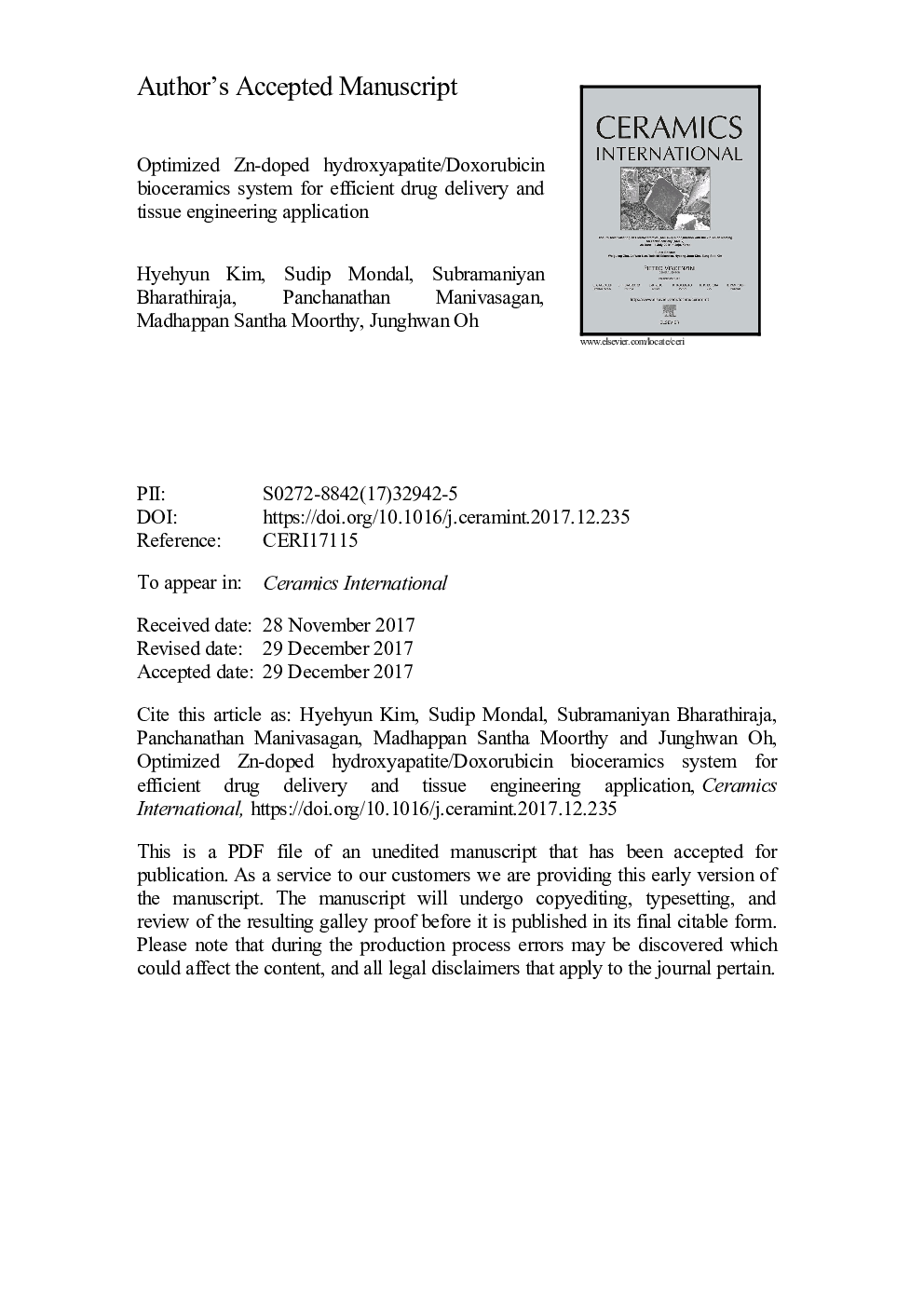| Article ID | Journal | Published Year | Pages | File Type |
|---|---|---|---|---|
| 7887595 | Ceramics International | 2018 | 32 Pages |
Abstract
The synthesis and fabrication of multifunctional nanostructures with enhanced biocompatibility are the most important characteristics for biomedical research. The goal of our present research is to study the optimum zinc (Zn)-loading on pure hydroxyapatite (HAp) bioceramics and its potential advantages in biomedical application. In this study, different mole concentrations (1, 2, 5Â mol%) of Zn doped HAp (Zn-HAp) nanoparticles were synthesized through a facile co-precipitation technique using zinc nitrate as a source for Zn metal. The synthesized Zn-HAp nanoparticles were critically characterized for their structural and morphological changes by different spectroscopy and electron microscopy analysis. The potential advances of Zn-HAp nanoparticles in biological application was studied by using MG-63 cell line, drug model experiment and scaffold cell attachment, proliferation study. The cell cytotoxicity test (MTT assay and trypan blue) was first conducted to confirm the nontoxic characteristics of Zn-HAp with enhanced MG-63 cell proliferation activity. The drug loading experiment of Zn-HAp nanoparticles was then confirmed with 1Â mol% Zn-HAp (which had the maximum drug loading efficiency with pH responsive drug interaction). Furthermore, the optimized 1Â mol% Zn-HAp constructed biomimetic scaffold shows excellent cell attachment and proliferation behavior with MG-63 cells. The result suggests that the biomimetic 1Â mol% Zn-HAp scaffolds may be of enormous potential in bone repair and regeneration. This research distinguishes from other research by showing an advanced analysis of the Zn-HAp and its enhanced physicochemical properties for tissue engineering and pH responsive drug delivery application.
Related Topics
Physical Sciences and Engineering
Materials Science
Ceramics and Composites
Authors
Hyehyun Kim, Sudip Mondal, Subramaniyan Bharathiraja, Panchanathan Manivasagan, Madhappan Santha Moorthy, Junghwan Oh,
